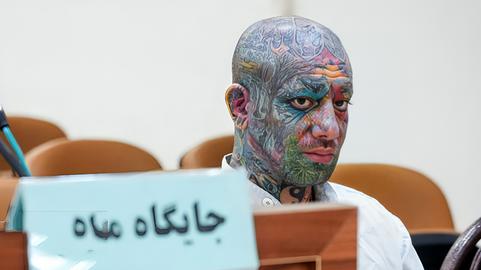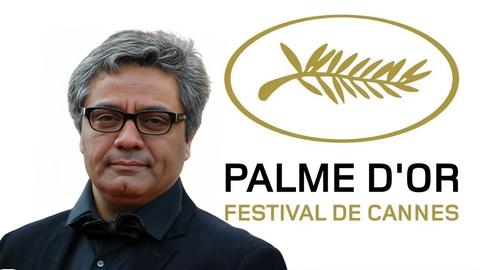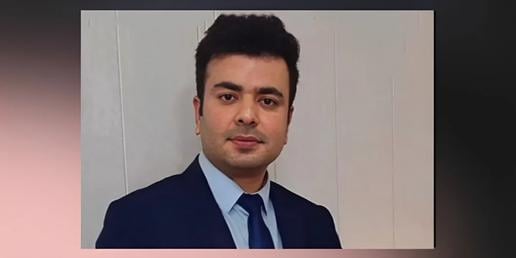
An ultra-conservative Tehran blogger recently alleged that a beloved 1985 Iranian children’s puppet movie, “The City of Mice,” was created “in service of Zionism ideals,” aiming to subliminally depict and endear the history of Jewish people to Iranian youngsters.
Such accusations are nothing new in Iran's cultural scene, where hardliners routinely wage assault on secular artists, framing their work and perspective in the context of the regime's ideological animosity with its enemies. But often times in Iran, the timing of such allegations raises distinct worries of a more practical kind, as renewed pressures on the Iranian film industry are often signaled by such oblique cultural attacks. Could this herald a fresh crackdown on the the country's actors, screenwriters, and directors?
The blogger’s conspiracy theory holds that the mice in the story who are following their teacher in search of their beautiful and plentiful city – previously built by their parents and dodging baddies on the way -- are actually the Jewish people en route to the “promised land.” He posits they are under the leadership of Moses, facing various perils but arriving safely in the end. Having just watched the film again, the author asks, “What other films, animations, and puppet shows of my childhood were made with content that served the Zionism ideal, which I watched joyfully and unawares?”
The conspiracy theory has gone viral in Iranian cyberspace, provoking myriad public reaction. While several conspiracy theories have emerged and festered in Iran’s relative isolation from the West over the past 35 years, those conspiracy theories that imply the people’s minds have become “servants” to ideas and ideals of foreign states are particularly scrutinized and ridiculed by many Iranians.
In the years immediately following the 1979 revolution, the newly established Islamic Republic launched a wide scale cultural revolution to cleanse the country of all traces of the non-Islamic and Western representations of the Shah era. Authorities shut down universities revised and rewrote school books, dismissed government employees deemed disloyal to the goals of the Islamic Republic, and shut down theaters; music production came to a halt and artists were sent home, unemployed and afraid of touching their musical instruments or practicing their arts. With the added sense of general loss and bereavement accompanying the Iran-Iraq War and news of Iranian youths lost in battle, of homes bombarded and destroyed, the country slipped into one of its darkest and saddest times ever.
In 1984, a children’s television show, “The School of Mice,” (Madreseh Mooshha) was introduced on the state-run television, aiming to encourage children to attend school. Gleeful children and adults alike welcomed the cute pack of mice every Friday afternoon. The characters and the show’s lingo spilled into the pop culture, bringing unexpected joy and color to the otherwise drab and sad Iranian society.

A very successful motion picture by the name of “The City of Mice” followed the series later, going on to become one of the most successful shows in the history of Iranian cinema. Alireza Sotoudeh, 40, who was 12 at the time, recalls: “There were long lines outside the cinema. Entire families would fill up the theater, and as soon as the first song came on, in the comfort of the dark, people started singing along and clapping. The theater attendants would then train their flashlights on us in order to get us to be quiet. I begged my parents to take me to see the film four times. It happened like this every single time.”
The television show and later the film were created by some of the most loved, respected film and television artists, such as Marzieh Boroumand (director), Hamid Jebelli, Iraj Tahmasb, and Fatemeh Motamed Aria. Some have since been banned from their professional activities due to their appearance or conduct in their private domain or on the red carpet of international film festivals. The respected director of the series and the film, Marzieh Boroumand, recently shared a memory about the difficulties she faced in her creative work and making “The School of Mice” inside the Islamic Republic of Iran Broadcasting organization, rife with government inertia and religious zealotry.
“After the success of the first season of ‘The School of Mice,’ IRIB asked me to continue producing the series, and I accepted gladly. I was a contract actress and made about 2,000 toman per month which was paltry pay even for its time. Even so, I was happy and didn’t think I deserved to make any additional money for making ‘The School of Mice.’ The series’ producer not only didn’t pay me any money, she had pushed all production responsibilities of the series on my shoulders. I followed up on the submitted scripts, revised them, and even wrote them myself occasionally. I made the puppets, repaired, and washed them. We would schedule studio time for audio recordings and I would coordinate the staff and pay out of pocket for refreshments and transportation. The producer and her assistant who also happened to be her husband reimbursed me for those invoices with months’ delay. I accepted all of this, but dealing with the IRIB officials was extremely overwhelming. They constantly kept reading the scripts and tried to discover “immoral” and “non-educational” points from them. They would find fault with every funny act of the mice. They found attributing names such as “long-tailed” or “long-eared,” or “chubby” to the mice to be improper and immoral. The mice/students couldn’t grab food from each other and couldn’t make noise in class, because they found this to teach the kids bad things! When we were taping the programs, we also had stories behind the scene. Someone was constantly standing behind the partition and sneakily keeping watch, lest, heaven forbid, the bodies of the puppeteers would touch each other during practice or recording sessions.”
Aside from their love and respect for the series and its production staff, most Iranians find it hard, indeed absurd, to imagine that under such watchful and ideologically-minded supervision within the state broadcasting system, such a subliminal message could find room for manifestation.
A look at some of the comments left on articles referring to this theory indicates that most commentators are not terribly receptive to the suggestion. Several have pointed out that the story of the Jewish people is a prominent part of the holy Quran and that they see nothing wrong with the story which is openly told and used in Iranian narratives and references; they say the story is legitimate, and not one that requires a subversive, subliminal telling. But most Iranians have used satire in their response, creating an impressive collection of very funny and entertaining rejoinders.
The non-stop attack of Mahmoud Ahmadinejad’s government on Iran's film industry during his eight-year tenure led to the closure of House of Cinema, Iran’s largest professional film association, towards the end of his term. As the Iranian film community attempts to regroup and begin a new chapter under the presidency of Hassan Rouhani, who promised during his campaign, “Let’s leave the cinema to those who know cinema, to filmmakers, artists,” and “Let’s leave cinema to the people.” Marzieh Boroumand and another successful Iranian female director, Manijeh Hekmat have come together to announce plans for making “The City of Mice II.” As new hope is found and many Iranian filmmakers and actors impatiently monitor the landscape for a chance to resume their creative work, efforts such as this new “theory” could be a part of a systematic effort to make sure their return to the screen and stage is not so smooth.






















comments